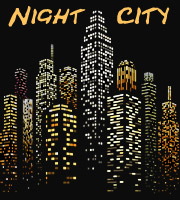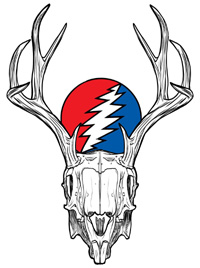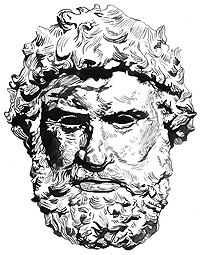Recently I have been including some more humorous tales in Harm City. One lady at work who likes Panhandler Nation just asked me if the stories were true. This is partly because I write fiction also. I find it interesting that few people question the violence, but that the humor is suspect. I am now including more humor because I am my own editor and am not as constrained to the dry self-help book model, which I had stretched to its humorous limit already. Many of these recent humorous tales are decades old.
On Writing Fact & Fiction
The reader might naturally question a nonfiction author, who also writes fiction, about blurring the lines. Herman Melville was accused of this when he wrote Typee. This is how I work the facts into both. I will give the example of supermarket violence. In my violence books I barely touched on the subject and only included a few violent shoplifter apprehensions in The Logic of Steel, The Logic of Force, When You’re Food and Predation. Since this kind of violence is not a big slice of the overall violence pie I did not want to over represent it in my nonfiction treatments of the subject, and thus distort the presentation.
I have composited numerous supermarket acts of violence into scenes involving Jay Bracken in Of The Sunset World and Pillagers of Time [These scenes can be read in the free samples provided when you click on the title.]. When not acting as a bodyguard for time travelers I have this character try to hold down a supermarket job as a form of comic relief. All of the violence he engages in with the shoplifter and irate customer in these two scenes was taken from eight real acts combined to make two bigger composite scenes.
Likewise all of the characters in those two epic fictional supermarket brawls are patterned directly after supermarket people I worked with. Melvin, the cashier in Independence Day is Adam Swinder. Melvin and Jay’s boss, KC, is actually patterned on KayJay from Panhandler Nation #3. So you see I have no ‘writing need’ to work fiction into the nonfiction, which is often stranger than anything I could make up anyhow. Instead I use unused non-fiction episodes that only made it into my Harm City titles as background numbers, to flesh out my fiction.
Sorting Out the Truth
Then there is the problem of veracity. Can I always tell if I am being lied to by someone I interview?
Sometimes I have decided that a story is an outright lie and not included it. In most cases, when my bullshit detector starts to light up it is because I find myself faced with exaggerations and omissions [That, the crucial face-saving omission, is usually the biggest distorting factor.] that I have to peel away or draw out in order to present a clear account that I sense is truthful.
This is how you can tell if I thought the person I was interviewing was completely truthful or only partially truthful. If an account consists of the person I interviewed telling the story in quotation marks, then they are someone I believed was telling the unvarnished truth. This is usually based on the fact that I already knew them well or that I have interviewed them extensively. If the story is a narrative with little or no quotes, then very often it was the core of a tale I had to peel adhering bullshit off of to present with a clear conscience.
One knife encounter from the Logic of Steel that many people disbelieved involved a guy pinning another guy’s hand to a bar top. I did not initially believe that account and had rejected a couple of obviously embellished accounts by this same weird individual. However, he had a scar that matched his story and I separately sought out a third party to verify the tale. The part about the hand being pinned turned out to be true. It turns out the guy exaggerated some peripheral things that were not even pertinent to the act of violence itself in order to seem more justified than he was.
The problem I had with The Violence Project that resulted in so much of the Harm City material [I still have 150 pages of raw text piled under my clean bath towels.] was that I had to get to know these people in order to sift through bullshit, dredge up details, draw the real painful truths out, and hopefully present an accurate and compassionate account. When a writer researches a subject he comes to care about his subject; ugly or not. Hence I came to care about a lot of people who lived tragic pain-filled lives, or were just plain troubled. One and all they adopted me as their biographer, their therapist, their drinking buddy, or their shoulder to cry on.
The resulting stress from such relationships is why I stopped intensive interviewing over a decade ago. I still consider myself to have a pretty finely honed bullshit detector, and have changed my style to brief ‘street’ interviews that I commit to memory for a few minutes to a few hours before writing them down, rather than a formal sit-down. [That is how I always handled cops and hardcore active criminals in the first place. I don’t like making those kinds of folks nervous.]
Harm City Noir Fiction
There will be some Harm City fiction before the end of 2013. I have three noir novelettes outlined that are based on the lives of three criminals who I interviewed extensively but used very little of the resulting material as anecdotes. All three of these men are now deceased. To write of them when they lived would have been to endanger them, so I will embellish their stories a little, mix in some material from other interviews or my own life, and present something that is about 80% true. It will be fiction, in that names will have been changed and some events altered, and it will be a little more interesting than it actually was.
I will not change the beginning or ending of their real life story, but simply choose a start point and end point from the accounts they gave me. Nor will I alter the nature, pattern of speech, or personality of these men. Again these tales will be fiction, and will be placed under the Harm City features heading as ‘noir fiction’. There won’t be any genetically engineered freaks, time-machines or big plots. These stories will just be at once illuminated and obscured versions of the truth as lived by certain troubled men in a dark corner of our world. But even that much liberty makes it fiction.
The titles and protagonist will be as follows: Aussie Jo in Past Due; Shoey in Shoebox; and Banno in The Prince.
So, in answer to your question Cheri, if it is in the Harm City section, on this page of the site, unless it says ‘noir fiction’ in the subtitle, it is all true to the best of my knowledge.











No matter if its true or not,I find your articles very interesting and informative.